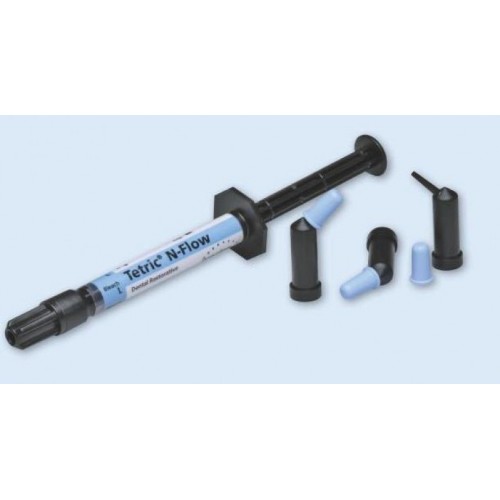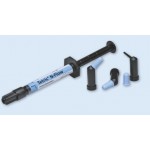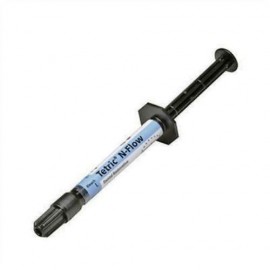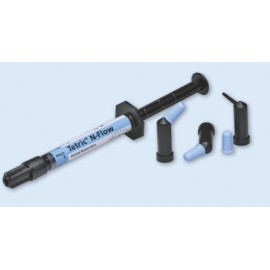Ivoclar Tetric N-Flow
Available Options
For fast ORDERING experience Visit our new site  www.medicabasket.com
www.medicabasket.com
NOTE: Due to volatility in dental market, Price and stock shown here are tentative and needed approval of supplier, Although we update frequently. Our Team will your order soon.
COD is not available now.
Call/ WhatsApp on +91-9313922999 / +91-9810283698

- Information
-
Dental Brands
- 3M Espe
- 3M Unitek
- A.J. Wilcock
- Agfa
- American Orthodontics
- Ammdent
- Anabond
- Angelus
- API Ashoosons
- API Instruments
- Apple Dental
- Being Foshan
- Bestodent
- Bien Air
- BIOLASE
- Blossom
- Bombay Dental
- Capri
- Captain Ortho
- Cerkamed
- Colgate
- Coltene Whaledent
- Confident
- D-Tech
- Danville
- Denext
- Dental Books
- Dental-Avenue
- Dentaurum
- Dentium
- Dentsply
- Desires ortho
- Detax Dental
- Diadent
- Dispodent
- DMG
- DPI
- Durr Dental
- Eighteeth
- Eltee Instruments
- Endoking
- Euronda S.P.A
- Fgm
- Fuji film
- G&H
- GC
- Gen-XT Implant
- Gendex
- Genoray
- Green Guava
- Hahnenkratt
- Heraeus Kulzer
- Horico
- Hu-Friedy
- ICPA
- Ids Denmed
- IMDSL Laser
- Itena
- Ivoclar Vivadent
- J Morita
- Jota
- Kalabhai
- Kavo
- Kerr
- Kodak
- Labomed
- Leone
- Libral
- Life Steriware
- Maarc
- Mani
- Marathon
- MDC
- Medicept
- Meta
- Modern ortho
- Moriz
- Navadha
- Neelkanth
- NeoEndo
- Novabone
- NSK
- Oracura
- Orateek
- Orchestrate O3D Aligner
- Ormco
- Oro
- Ortho Classic
- Ortho Organizers
- Ortho Technology
- Orthocare
- Orthosource
- Premier
- Prevest
- Prima Dental
- Pulpdent
- Pyrax Dental
- Rabbit Force Ortho
- Rejove 32Watts Aligners
- RS Dental Chair
- Ruby Dental
- Ruthinium
- Saeshin
- Samit
- Scheu
- SDI
- Septodont
- Shivam Dental
- Shofu
- SK Surgicals
- Skydent
- SS-White
- Strong
- Sun Medical
- Sure Endo
- Surgiwear
- Tokuyama
- TP Orthodontics
- Unicorn
- Unident
- Unique
- Vatech
- VDW
- VeeCare
- Vita
- Voco
- VRN
- W&H
- Waldent Equipment
- Waldent Instruments
- Waldent Material
- Woodpecker
- Zhermack
- Zoom
- Triodent
- Other brands
- Offers & Combos
- Contact Us
-
Product Category
- Composites & Restoratives
- Dental Education
-
Dental Equipment
- Air-Motor
- Apex Locators
- Autoclaves & Sterilizers
- Dental Air Compressor
- Dental Chair
- Dental Chair Accessories
- Dental Handpiece
- Dental Laser
- Dental Loupes
- Dental Surgery
- Endo Motor
- Handpiece Cartridge
- Implant Motors
- Intraoral Camera
- LED Light Cure
- Micromotors
- Microscope
- Radiology
- Suction Units
- Ultrasonic Scalers
- UV Chamber
- Dental Lab
- Endodontics
- Implantology
- Instruments And Burs
- New Clinic Setup Kits
- Oral Surgery
- Paedodontics
- Periodontics
- Prosthodontics
- Sterilization & COVID-19 Supplies
- General Dentistry
-
Ortho Store
- Arch Wires & Springs
- Bonding Adhesives
- Elastomerics
- Expansion Screws
- Headgear accessories
- Laboratory Products
- Mini TAD Screw
- Molar Bands and Tubes
- Ortho Attachments
- Photographic Accessories
- Weldable Accessories
- Braces or Brackets
- Clear Aligners
- Orthodontic Appliances
- Orthodontic IPR solutions
- Orthodontic Instruments
- Find Your Dentist
- Medica Basket
Your shopping cart is empty!
Features :
- Excellent wetting behaviour allows for convenient application in all areas
- Outstanding stability – ideal for Class V restorations
- High level of radiopacity for a sound diagnosis
Description
Tetric N-Flow is a light-curing, radiopaque flowable nano-hybrid composite based on nano-optimized technology. Tetric N-Flow is based on 10 years of tradition and the clinical performance of Tetric Flow. Because of the material’s outstanding wetting ability even in areas that are hard to reach, it is particularly suitable for use as a cavity liner and for small cavities of any kind. At the same time, the material offers outstanding stability and is thus ideal for Class V restorations.
Tetric N-Flow is the ideal complement to Tetric N-Ceram for an esthetic restoration.
Tetric N-Flow is available in 10 shades – 6 enamel, 1 dentin, 1 incisal and 2 bleach shades. It is supplied in both syringes and Cavifils.
Indications:
- As initial layer under class I and II restorations
- Anterior restorations (Classes III, IV)
- Class V restorations (cervical caries, root erosion, wedge-shaped defects)
- Small restorations of all types
- Extended fissure sealing
- Splinting of mobile teeth
- Blocking out of undercuts
- Adhesive cementation of translucent ceramic and composite restorations
Packaging
- 1 x 2gm syringe
Direction to Use
Application of Tetric N-Flow
- Tetric N-Flow Bulk Fill can be applied in increments of up to 4 mm thickness.
- Tetric N-Flow Bulk Fill must be covered with a layer of methacrylate based universal or posterior composite (e.g. Tetric N-Ceram/Tetric N-Ceram Bulk Fill/IPS Empress Direct).
- Proximal contacts must be established by means of a matrix system. The filling material does not exert any pressure on the matrix band. The matrix band can be shaped with a suitable hand instrument (e.g. a balltype condenser) before and/or during light-curing.
- Complete polymerization requires a sufficiently long exposure time. For the recommendations regarding exposure time and light intensity see table.
- When using a metal matrix, additionally polymerize the composite material from the buccal or lingual/palatal aspect after removing the matrix, if no Bluephase N polymerization light is used or the light probe cannot be ideally positioned, e.g. distant to composite or diverging scattering angle.
| Unit Programm | Bluephase N | Bluephase NM | Bluephase NMC |
| High Power | 10 s (1200 mW/cm2 ) | 15 s (800 mW/cm2 ) | 15 s (800 mW/cm2 ) |
| Soft Start | 15 s | ------ | ------ |
| Low Power | 20 s (600 mW/cm2 ) | ------ | ------ |
| Light intensity | Exposure time |
| ≥ 500 mW/cm2 | 20 s |
| ≥ 1‘000 mW/cm2 | 10 s |






